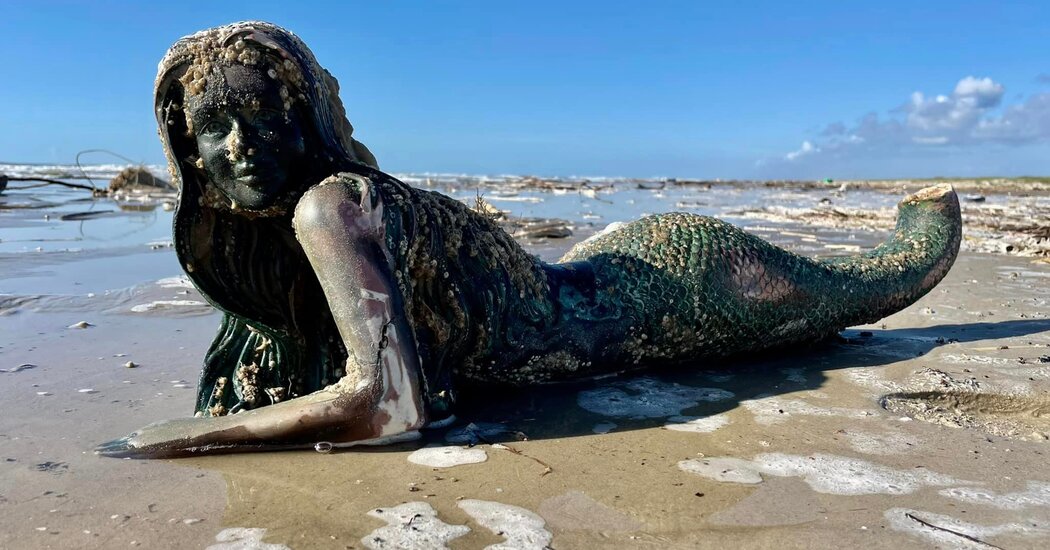Henry Petroski, Whose Books Decoded Engineering, Dies at 81
Henry Petroski, who demystified engineering with literary examinations of the designs and failures of large structures like buildings and bridges, as well as everyday items like the pencil and the toothpick, died on June 14 in hospice care in Durham, N.C. He was 81.
His wife, Catherine Petroski, said the cause was cancer.
Dr. Petroski, a longtime professor of civil and environmental engineering at Duke University, adapted the architectural axiom “form follows function” into one of his own — “form follows failure” — and addressed the subject extensively in books, lectures, scholarly journals, The New York Times and magazines like Forbes and American Scientist.
“Failure is central to engineering,” he said when The Times profiled him in 2006. “Every single calculation that an engineer makes is a failure calculation. Successful engineering is all about understanding how things break or fail.”
In “To Engineer Is Human: The Role of Failure in Successful Design” (1985), Dr. Petroski examined what happens when design goes terribly wrong — for example, the collapse in 1981 of the two skywalks in the Kansas City Hyatt Regency Hotel, which killed 114 people, and the collapse in 1940 of the Tacoma Narrows Bridge in Washington State just a few months after it opened.
Shortly after the Hyatt Regency calamity, Dr. Petroski wrote, one of his neighbors “asked me how such a thing could happen.”
“He wondered,” he continued, “did engineers not even know how to build so simple a structure as an elevated skywalk?” But, he added, he did not think his explanations about the hotel collapse and other failures satisfied his neighbor.
He wrote the book, he said, to define what an engineer is.
“Even though I had three degrees in engineering, and had been teaching engineering and was registered as a professional engineer,” he told The Times in 2014, “if some neighbor asked me, ‘What is engineering?,’ I said, ‘Duh.’ I couldn’t put together a coherent definition of it.” His best effort, he said, was, that “engineering is achieving function while avoiding failure.”
Pencils proved a prosaic object for Dr. Petroski’s failure analysis.
Spurred on partly by the inferior quality of the pencils he was given at Duke, he used engineering equations in a 1987 paper in the Journal of Applied Mechanics to describe why pencil points break.
“By asking why and how a pencil point breaks in the way it does,” he concluded, “we are not only led to a better understanding of the tools of stress analysis and their limitations, but we are also led to a fuller appreciation of the wonders of technology when we analyze the aptness of such a manufactured product as the common pencil.”
Two years later, he expanded on the journal article with “The Pencil: A History of Design and Circumstance,” a 448-page tour through its invention and evolution — with brands like Faber-Castell, Dixon Ticonderoga and Koh-I-Noor among them — that included a chapter about the pencil-making business of Henry David Thoreau’s family in Concord, Mass.
Thoreau, best known for writing about his experience living simply in the woods in “Walden,” was a self-taught pencil engineer who learned about the graphite and clay mixture that made European pencils superior, and who helped adapt them to his family’s pencil manufacturing.
Nearly 20 years after “The Pencil” was published, Dr. Petroski turned to an even humbler quotidian object with “The Toothpick: Technology and Culture” (2007), which explained its evolution from a form used by early hominids to the creation of the modern toothpick industry in the 19th century.
Reviewing the book for The Times, the humorist Joe Queenan mocked the need for a toothpick tome that weighed in at more than 400 pages.
“It is not so much a book as a threat,” he wrote. “If you liked ‘The Toothpick,’ wait until you get a load of ‘The Grommet.’”
He added: “This thing about things has gone far enough, Mr. Petroski. Knock it off.”
Dr. Petroski was born on Feb. 6, 1942, in Brooklyn and grew up there and in Queens. His mother, Victoria (Grygrowych) Petroski, was a homemaker. His father, also named Henry, was a rate clerk for trucking companies.
“I remember how he would read the labels on cans and boxes and explain how their contents got to our table,” Dr. Petroski told The Herald-Sun of Durham, N.C., in 2004. “I admired how he could tell a story from such a small amount of information, and I expect that influenced me somewhat.
“As a child,” he continued, “I did not read the labels so much as play with the cans and boxes as building units. I was interested in making tall towers out of tin cans and bridges out of boxes.”
He earned a bachelor’s degree in mechanical engineering from Manhattan College in the Bronx in 1963, then received a master’s degree in theoretical and applied mechanics from the University of Illinois Urbana-Champaign in 1964 and a Ph.D. there in 1968.
He met his future wife, Catherine Groom, when she was studying English at the University of Illinois. An occasional poet, he wooed her with sonnets, and they married in 1966. In addition to his wife, he is survived by their daughter, Karen Petroski; their son, Stephen, a mechanical engineer who is a patent lawyer; his brother, William; his sister, Marianne Petroski; and two grandsons.
Dr. Petroski taught engineering at the University of Texas at Austin for six years before joining the Argonne National Laboratory in Lemont, Ill., where he was a group leader in the reactor analysis and safety division, in 1974. He left for Duke in 1980, and his teaching schedule gave him the freedom to write prolifically about engineering without being technical. He retired in 2020.
“He worked at the intersection of engineering and history,” Earl Dowell, a former dean of Duke’s Pratt School of Engineering, said in a phone interview. “His readership included a wide range of engineers who enjoyed his books because they presented the bigger picture of engineering, not so much down in the details, and non-engineers.”
His other books include “The Evolution of Useful Things: How Everyday Artifacts — From Forks and Pins to Paper Clips and Zippers — Came to Be as They Are” (1992); “Small Things Considered: Why There Is No Perfect Design” (2003); and “To Forgive Design: Understanding Failure” (2012), which continues where “To Engineer Is Human” ended, with analyses of the loss of NASA’s two space shuttles, the Deepwater Horizon oil spill and other epic engineering fails.
Dr. Petroski received fellowships from the Guggenheim Foundation and the National Humanities Center. He conducted research on structural engineering and design that was sponsored by organizations like the United States Army Corps of Engineers and the National Science Foundation.
In one of his last books, Dr. Petroski turned his curiosity and engineer’s eye to the midcentury cedar cabin in Maine where he and his wife spent their summers. He analyzed its structure and its oddities and plumbed the mystery of Robert Phinney, the engineer and amateur carpenter who had built it.
“Phinney was neither a classical architect nor even, as far as I know, a student of architecture,” Dr. Petroski wrote in “The House With Sixteen Handmade Doors: A Tale of Architectural Choice and Craftsmanship” (2014).
“What I deduce from his design and construction is that he was a folk architect and a builder in the vernacular, but the house he designed and built was anything but common. It was, in the words of Le Corbusier, une machine à habiter — a machine for living in — and it was a custom-made machine. It was a structure worthy of an engineer who had worked on precision calculating machines.”


